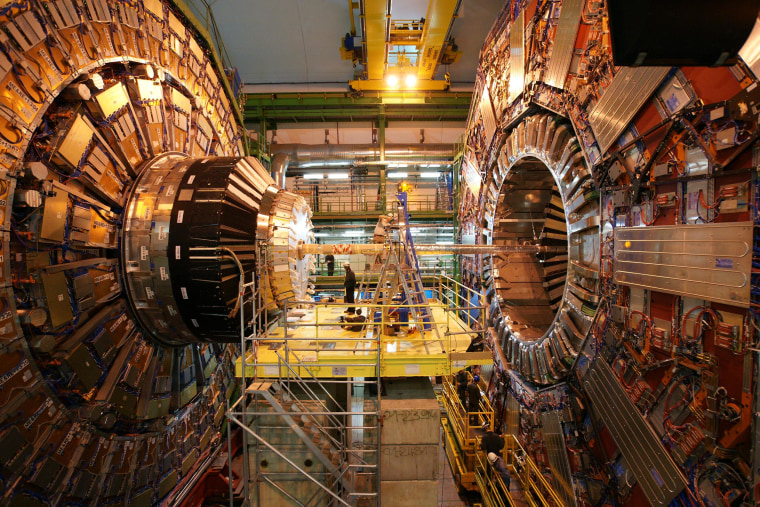Scientists have determined the mass of the heaviest elementary particle, the top quark.
The measurement was made using the Large Hadron Collider (LHC) at CERN in Geneva, Switzerland, and the Tevatron at Fermilab in Batavia, Ill. Four separate experiments found a joint value for the top quark of 173.34 (+/- 0.76) gigaelectronvolts divided by the speed of light squared, scientists announced Wednesday at a physics conference in Italy.
"The combining together of data from CERN and Fermilab to make a precision top quark mass result is a strong indication of its importance to understanding nature," Fermilab director Nigel Lockyer said in a statement, adding, "It's a great example of the international collaboration in our field." [Wacky Physics: The Coolest Little Particles in Nature]

The four LHC and Tevatron experiments — ATLAS, CDF, CMS and DZERO, respectively — are the only ones that have observed top quarks, which are 100 times the mass of a proton. In addition to top quarks, there are five other types, or flavors, of quarks: bottom, up, down, charm and strange. (For instance, protons are made of two up quarks and one down quark, whereas neutrons contain two down quarks and one up quark.)
The new particle mass will allow scientists to test the mathematics of quantum connections among the top quark, the Higgs particle — the particle detected by the LHC in 2012, which explains how other particles get their mass — and the W boson, the carrier of the electroweak force.
Theoretical physicists can now investigate how the mass of the top quark will affect predictions of the stability of the Higgs field (the field associated with the Higgs particle), and the effects on the evolution of the universe. In addition, the new value will allow scientists to test for inconsistencies in the Standard Model of particle physics and discover new physics to describe the nature of the universe.
- Tanya Lewis, LiveScience
This is a condensed version of a report from LiveScience. Read the full report. Follow Tanya Lewis on Twitter and Google+. Follow us @livescience, Facebook & Google+.
- Beyond Higgs: 5 Elusive Particles That May Lurk in the Universe
- Gallery: Dreamy Images Reveal Beauty in Physics
- The 9 Biggest Unsolved Mysteries in Physics
Copyright 2014 LiveScience, a TechMediaNetwork company. All rights reserved. This material may not be published, broadcast, rewritten or redistributed.